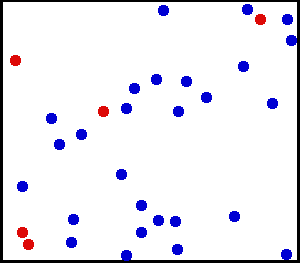Forget Kinetic Theory
 The kinetic theory of gases describes a gas as a large number of small particles (atoms or molecules), all of which are in constant, random motion. The rapidly moving particles constantly collide with each other and with the walls of the container. Kinetic theory explains macroscopic properties of gases, such as pressure, temperature, viscosity, thermal conductivity, and volume, by considering their molecular composition and motion. This theory considers that the number of molecules contained in an ideal gas sample is very large, and motion in all directions is identical. As such the average velocities of all gas molecules at an instant is zero.
The kinetic theory of gases describes a gas as a large number of small particles (atoms or molecules), all of which are in constant, random motion. The rapidly moving particles constantly collide with each other and with the walls of the container. Kinetic theory explains macroscopic properties of gases, such as pressure, temperature, viscosity, thermal conductivity, and volume, by considering their molecular composition and motion. This theory considers that the number of molecules contained in an ideal gas sample is very large, and motion in all directions is identical. As such the average velocities of all gas molecules at an instant is zero.
However if the number of molecules is small, the case is not so. Consider a gas sample with only five molecules of an ideal gas, with speeds , , , and . Then, the magnitude of average velocity of particles at this instant is
This section requires Javascript.
You are seeing this because something didn't load right. We suggest you, (a) try
refreshing the page, (b) enabling javascript if it is disabled on your browser and,
finally, (c)
loading the
non-javascript version of this page
. We're sorry about the hassle.
Well, I just stated you the magnitude of the velocity vector of all gas molecules. We just can't really find the average velocity (and its magnitude) unless the directions are stated. However I if I would have asked the average of magnitude of velocities (which implies average of speeds), then the answer would have been 3 m / s .